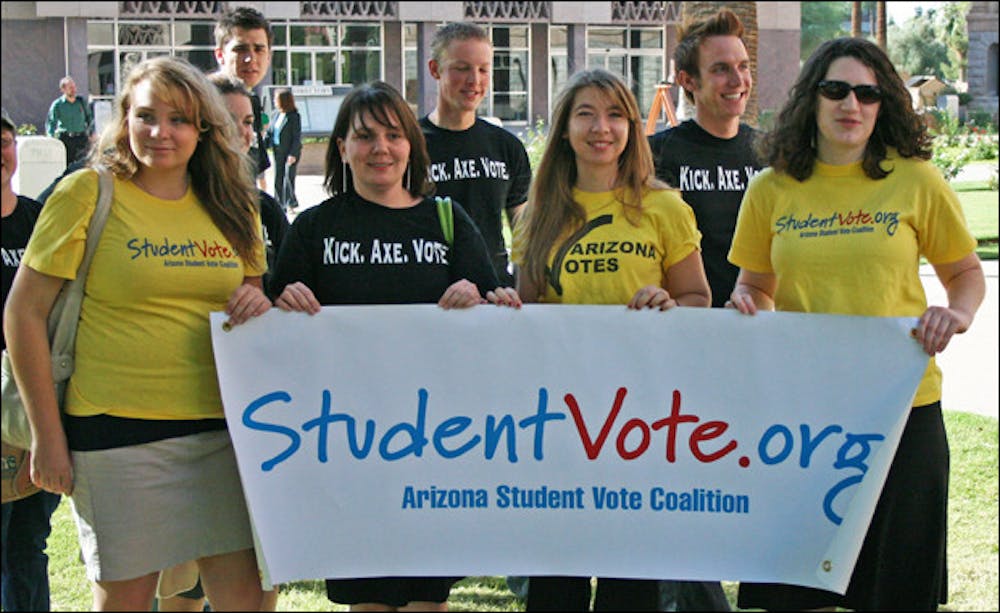Grassroots campaigning is key to achieving a high turnout rate among younger voters in the upcoming election, student leaders and a bipartisan group of state lawmakers said Monday.
Members of the Arizona Student Vote Coalition and the state Legislature urged young people to vote on Election Day at a rally on the House lawn at the State Capitol in Phoenix.
The coalition is comprised of the Arizona Student Public Interest Research Group, Arizona Students’ Association and student governments from Arizona’s three public universities. Student leaders from each of the universities talked about methods they’ve used to increase young-voter turnout.
Grassroots campaigning methods like tabling on campus and using Facebook are being used at ASU, said Andrew Rigazio, vice president of policy for the Tempe campus’ Undergraduate Student Government.
Other methods include a shuttle bus that will take students to the nearest polling place during early voting and a “Rock the Vote” fair and concert at Gammage Auditorium in Tempe this Sunday, added Rigazio, an accounting junior.
Rigazio said it’s important for young voters come out on Election Day because they will make up close to a quarter of the national electorate and can have a big impact on issues like higher education.
“Young voters are likely to vote when asked by their peers,” said PIRG representative Elma Delic, a UA journalism sophomore.
Delic added that grassroots efforts such as tabling on campus, making reminder phone calls, Facebook and text messaging are methods being used by the coalition to mobilize younger voters at UA.
NAU student body president Brad Busse said that at his campus, leaders are using tabling, social-networking sites and T-shirt distribution.
“Over the years, young voters have been disenfranchised by politicians because they felt they did not need to listen to young voters that would not vote,” Busse said.
He said young voters are changing that perception because students have started to become involved in the political system.
“[Students are] empowering themselves to empower their peers,” he added.
Despite having the lowest registration and voter-turnout rate in the 2004 election, the 18-to-24 age group had the largest increase in these two rates compared to the 2000 election. The registration rate among 18 to 24-year-olds nationally increased from 51 percent in 2000 to 58 percent in 2004. The voter-turnout rate increased from 36 percent in 2000 to 47 percent in 2004, according to the U.S. Census Bureau.
In Arizona, the voter turnout rate for 18 to 24-year-olds had a larger increase, rising from 26 percent in the 2000 election to 42 percent in the 2004 election, according to the Center for Information and Research on Civic Learning and Engagement.
Rep. Steve Gallardo, D-Phoenix, said the participation of younger voters in the political process is important because they will be our future leaders.
He also said that although the presidential election is exciting, local elections — like the race for seats in the state Legislature — are just as important.
“These are the offices that decide how much money is going to ASU, NAU and UA,” he said.
House Speaker Jim Weiers, R-Phoenix, said voting is fundamental to American democracy, regardless of who people vote for.
“Many young people have taken the first step to register, and now the next step is [to] turn out,” Weiers said.
Reach the reporter at carlos.bravo@asu.edu.




